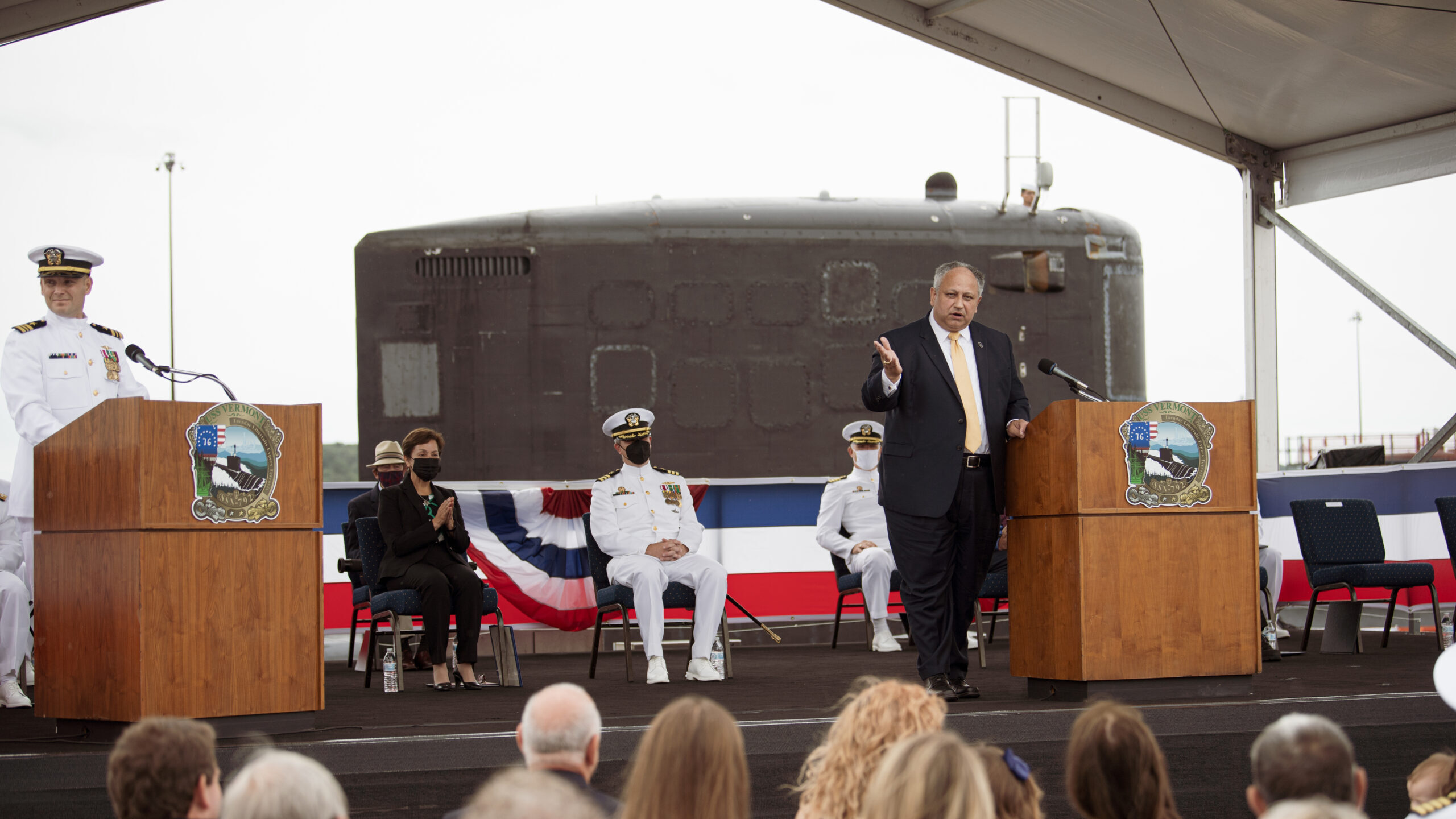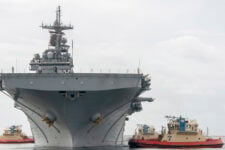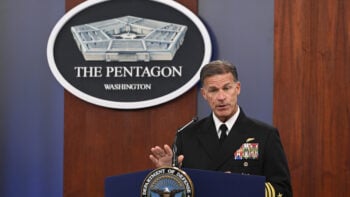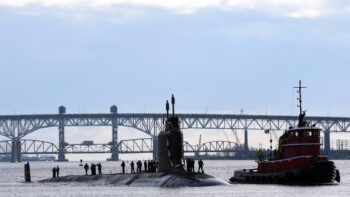
Navy Secretary Carlos Del Toro published his new strategic guidance in October. The Navy’s goals are the same as they ever were. (U.S. Air National Guard /Ryan Campbell)
WASHINGTON: One song comes to my mind when I consider what 2021 has meant for the US Navy: “Once in a Lifetime,” by the Talking Heads. The famous refrain from that tune being: “Same as it ever was, same as it ever was.”
Before I dwell on that thought, a confession. I came to Breaking Defense during the summer, but prior to that I had taken a hiatus from the Navy beat to report on cybersecurity. While that meant I wasn’t paying quite as much attention to the Pentagon for the first several months of 2021, it did give me the chance to return to this beat with fresh eyes. When I returned, my discussions with sources and others mostly amounted to catching up on issues.
That brings me back to the Talking Heads. As I understand it, “Once in a Lifetime” is primarily about how we go through the motions of daily life without always questioning why we do what we do. We end up with a “large automobile” or “a beautiful house” because that is society’s expectation, but did we need or want either of those things?
[This article is one of many in a series in which Breaking Defense reporters look back on the most significant (and entertaining) news stories of 2021 and look forward to what 2022 may hold.]
None of this is to suggest the Navy or Marine Corps is absent minded, trotting along without thought. But it’s hard to ignore that 2021 has been a year for the services where things were, largely, the same as they ever were. Whether as a result of lack of will or strength from Navy leadership, or because of direction from above, significant changes or pivots simply didn’t happen in 2021.
For example, see this story about Navy Secretary’s Carlos Del Toro “new” strategic guidance published in October. He touts his four “Cs”: China, COVID, culture and climate change. I am not suggesting these pillars are misguided or ill-conceived, but is this really any different than what the Navy has been doing in recent years? I would argue no.
Another conversation I sought when I returned to the Navy beat was the ongoing struggle between the Navy’s desires to proliferate unmanned systems in their fleet, matched against congressional concerns about whether the technology and strategy is wholly baked. The consensus I got from those in Congress, industry and elsewhere is the fight is the same as it ever was: the Navy’s programs remain as ambitious as lawmakers will allow, but the narrative to explain that strategy is still not coherent enough to completely bring lawmakers aboard.
These issues may be a result of the first year for a new administration at the White House, at least indirectly. To date, the Navy has a confirmed secretary, a nominee for under secretary and no sight or hints about who may become the acquisition executive. At this same time during the Trump administration, Hondo Geurts was settling into his new office as acquisition chief for Navy Secretary Richard Spencer.
It is not my job to give hot takes about my beat; I go to great lengths to maintain a Rolodex of intelligent former Navy folks to do that for me. But my hot take about the Navy’s progress this year on its many goals — China, unmanned, Columbia-class submarines — is that this has been a year of keeping things on track, but that’s about it.
Lastly, it is my job as a reporter to give credit where it is due, so this is a hat tip to my colleague Valerie Insinna. Her piece correlating Air Force actions to Taylor Swift songs helped inspire the framing device for my own thoughts.






















